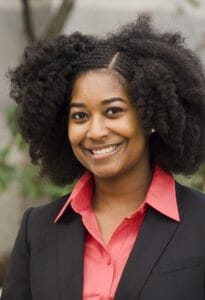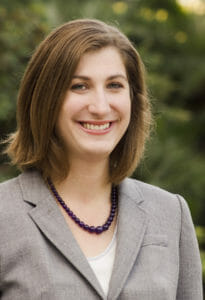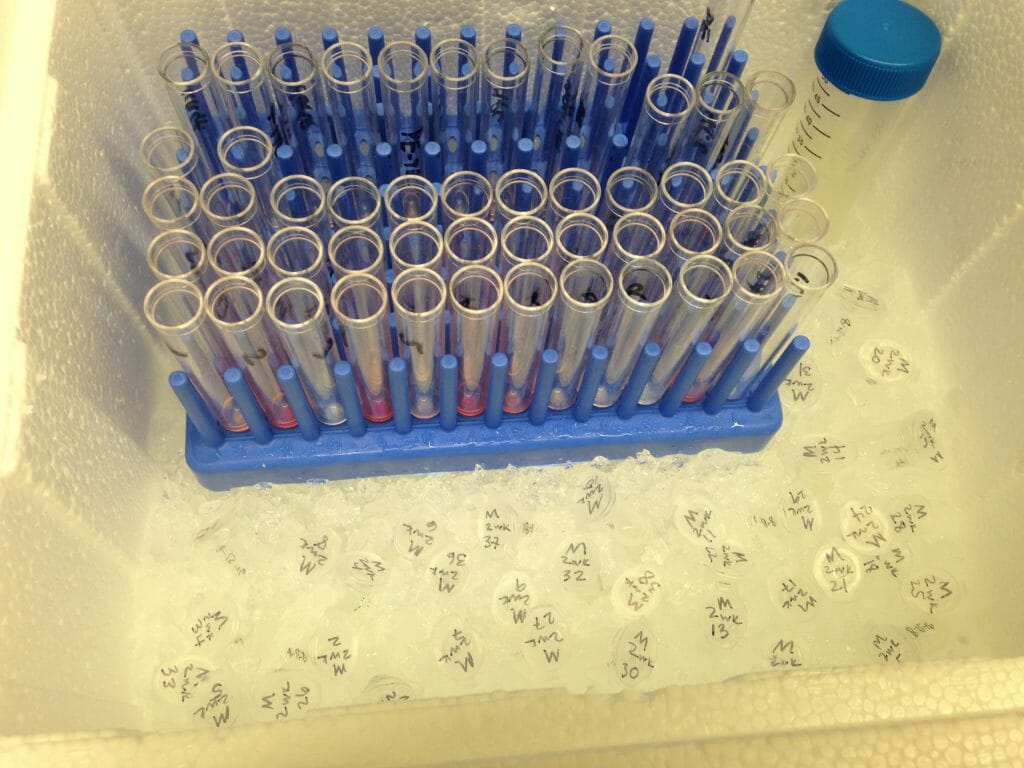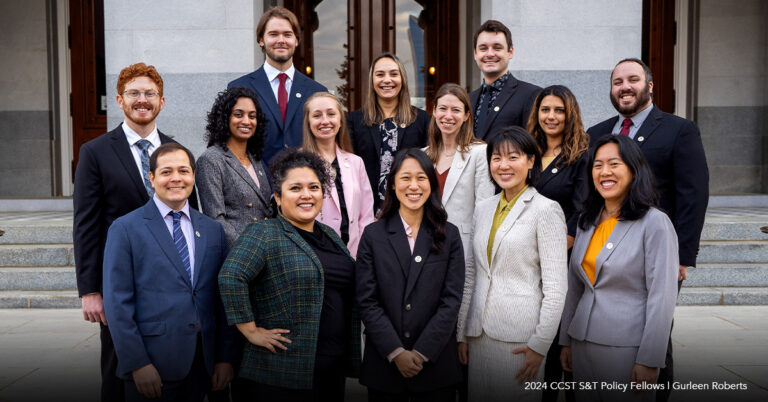Update: Applications for the CCST Science & Technology Policy Fellowship Have Closed
Life Before #CAleg: 2017 CCST Science Fellows Share Their PhD Pasts (Part 2)
October 16, 2017 | CCST S&T Policy Fellows
The 2017 Class of our CCST Science & Technology Policy Fellows are now entering the final stretch of their year-long fellowship! As they begin to plan for professional futures in or beyond Sacramento, it’s also a perfect time to look back at their life before the Legislature, and the journeys that shaped them into talented thinkers and amazing human beings. See what experiences and insights our CCST Science Fellows bring to the policymaking arena of California, and to careers beyond! [Read Part 1 | Part 2 | Part 3]

Kristin Warren, PhD
Placement: California Legislative Black Caucus
PhD, Mechanical Engineering, Carnegie Mellon University
BS, Mechanical Engineering, Kettering University
It’s tantalizing: the idea of farming microscopic algae and harvesting them as renewable, sustainable sources of fuel for our cars, motors, and machines. But have you ever thought about how exactly engineers process these incredibly tiny cells, and extract their hydrocarbon molecules for conversion into commercially useful fuels?
That curious question drove Kristin Warren’s research in Pennsylvania at Carnegie Mellon University, where she pursued her PhD degree with the support of a Bill and Melinda Gates Foundation Millennium Scholarship.
So how do you best squish tiny algae to get to their precious oils?
“My research looked at mechanical means of lysing microalgae passively through microfluidics ― basically, by squeezing these cells through tiny tubes, to force them to rupture,” Kristin says. “I did computational and experimental research, first drawing possible configurations or patterns on a computer for the microfluidic devices that would induce lysis. Then I would build these rupturing channels, and try to see whether they could successfully break open the cells to release the lipid content within ― which is the energy portion that you would be able to make the biofuel from.”
Michelangelo had his marble, but Kristin sculpted her algae-rupturing channels with a polymer called PDMS (polydimethylsiloxane). “You first draw up and create this tiny silicon wafer with the channel designs you want, then you pour this PDMS polymer over it so that it molds to and takes the shape of the wafer. After curing that molded PDMS layer, you pretty much have a set of fabricated channels.”
“It’s like using Play-Doh, and smashing it against a LEGO block to make an imprint of that block. That imprinting is what forms the channel we need,” Kristin laughs. “Curing it then makes the material harder, and more suitable for industrial use.”
Getting the width and dimensions of these channels was critical. The idea behind microfluidic extraction was to force these miniscule globs of algae through a hardened channel ― narrow enough and forceful enough so that each cell would break and open as they squeezed through in rapid succession, but not too narrow or too fast so that the channel would clog up and jam the process.
Making breakthroughs has always been a part of Kristin’s personal and academic path. While she holds the honor of being the first female African-American PhD graduate in mechanical engineering at Carnegie Mellon University, Kristin counts a more personal journey as her proudest.

“I’m most proud of my growth and development in public speaking. I was shy as a kid, and it took some changes in scenery for me to break out of my shell,” Kristin admits. “When I went to college, I became more involved in clubs and groups, and I eased into leadership positions ― then through those leadership positions I was able to develop different skills, like being a part of Toastmasters. These days, I have no fear of speaking in front of larger groups.”
It was an experience in graduate school, however, that piqued Kristin’s interest in public policy.
“While in Pittsburgh, I was part of a mentoring group for inner-city girls of African-American heritage or descent, and we did a service learning project on social justice,” she explains. “The facilitator of the meeting asked these girls if they knew who Martin Luther King, Jr. was ― and these girls said nothing. The only thing they knew was that he was shot, and that was a little bit troubling.”
That memory ― coinciding with her explorations at the time on how societal constructs of race in America shaped policy areas like housing, transportation, education, pay, and wage gaps ― nudged Kristin to explore ways she could shape and mold innovations beyond engineering.
“I was trying to find ways to potentially ease that pain for people who are disenfranchised,” Kristin says. “How can I influence or change the status quo? I felt that I could be of greater service to society outside of academia. So that is how I turned my eye towards policy.”

Bao-Ngoc Nguyen, PhD
Placement: Senate Committee on Health
PhD, Bioengineering, University of Maryland
BS, Bioengineering University of Maryland
For the amputee, the thought of regenerating a lost limb may seem like science fiction. For Bao Nguyen, it was a challenge worthy of turning into scientific reality.
“We wanted to create human bone tissue in the lab for purposes of regeneration,” explains Bao, whose parents emigrated from Vietnam to Germany, then to the United States. “Right now, when you severely injure a limb, people are often forced to amputate and use prosthetics. But someday, we should be able to instead regenerate certain parts of the body. There’s ongoing research on growing skin, muscles, and nerves, and I worked on regenerating bones.”
In her PhD research, Bao used stem cells — which, much like how houses are constructed atop of erected frames, were introduced onto a scaffold, in hopes that the cells would grow and transform into bone.
But Bao says it isn’t enough to just grow bones alone, because in life, bones and bone cells are surrounded by other tissues. “Bone cells need to be fed and nourished, so in regenerating bones, you must also introduce cells that generate the blood vessels which will nourish the bones,” she explains.
Still, it’s one thing to grow bones and blood vessels in separate experiments — and quite another to be growing those cells together, and mimic what happens in a real human body.
“We are trying to satisfy the growth requirements of two very different types of cell,” says Bao. “It’s a balance act making sure both types of cells stay alive, and both do what they are supposed to do, in the same environment. It’s really the microenvironment surrounding each tissue type that we must learn to replicate.”
For her project, Bao experimented with chemical signals that can specifically activate the growth of bone cells versus blood vessel cells, without “cross-talk” that would confuse the cells. Inside the regeneration chamber, Bao also tried to replicate elements of the living body, like mimicking the flow of blood and nutrients across the cells and scaffolds.

The dream is to not just fix small breaks, but to regrow entire human bones someday. Bao and her mentors sought after the grand prize — creating an adult-sized femur, the largest bone in the human body. They made progress over the course of her thesis, although the prize remains elusive.
“Your body can fix a break in the bone naturally, if the size of the break is small enough — say for example, half an inch for human bones. Once it gets beyond a certain point, and you’re missing too much of that bone, the distance becomes too far,” says Bao. “We always wanted to go to a distance that may seem too far, and not just fix something that your body can heal naturally. The objective was always: ‘If we are going to be clinically relevant — doing something that doctors are actually going to care about, and go beyond animal models in rats, rabbits, and sheep — then can we create something that a person would actually need, like the femur?’”
For Bao, solving complex challenges to create real, effective outcomes is alluring.
“Biomedical engineering research is very broad and you can work on very small things on a molecular level that are very interesting, but tissue engineering is one of those fields where you could produce a visible, tangible product,” she says. “I could actually explain my research to my parents, ‘This is science a person can hold and use.’ And that is what really drew me to it.”

Jen Chase, PhD
Placement: Assembly Committee on Privacy and Consumer Protection
PhD, Cellular and Molecular Biology, University of Michigan
BS, Biochemistry, South Dakota State University
BA, Spanish, South Dakota State University
Too many of us have witnessed the toll that chemotherapy and radiation therapy takes on human bodies. These treatments are used to control and destroy cancerous cells, but they also do great damage to healthy cells and normal cell generation.
“When patients have blood cancers like leukemia, under current methods they get hit with a lot of chemotherapy and radiation,” says Jen Chase. “This is damaging and especially harmful for children because they often get secondary diseases. They will often be cured of their leukemia, but they may get another type of cancer later on, because their therapies were very toxic and harmful.”
Creating therapeutic drugs that targets cancerous cells — while maintaining the normal generation of healthy cells — was a key objective of Jen’s PhD research.
“In particular, I studied blood stem cells,” Jen explains. “We wanted to understand the mechanisms and genes that regulate the normal production of blood cells, so that when we develop cancer therapeutics, we don’t inadvertently damage the normal function of those genes — which would then permanently damage your stem cells, and impair your body’s ability to produce blood.”

Jen says that the stem cells inside bones are special because they can make any type of blood cell in the human body. Our bodies constantly generate blood via our bone marrow stem cells.
“So, in studying blood cancers like leukemia, a lot of research focuses on cancers in infants and young adults, and those in older adults,” Jen explains. “They each tell us a different story about the genetic causes of blood cancers: In children, blood cancers tend to be linked to genetic mutations they’re born with or were triggered early on. Whereas in the elderly, they tend to be linked to genetic damage and mutation from pollutants and other external factors we’re exposed to over the course of our lifetime.”
The mystery, Jen says, is that scientists don’t yet know how the stem cells in our bone marrow receive and translate all these different mutations and signals ― and how those mechanisms dictate cancer formation.
Exploring such complex questions and unfamiliar territory requires teamwork, and Jen enjoyed working in a setting with many collaborators, each bringing their strengths.
“One of my colleagues would focus on the biochemistry aspect and synthesizing potentially useful compounds, while I would focus on the biological foundations of these signals and mechanisms, so together we could move forward,” Jen says. “And my boss was an MD-PhD, combining a researcher’s way of thinking with a physician’s considerations for healing, which really informed our goal of developing therapeutics that target cancerous cells while leaving the normal ones unharmed.”
For Jen, it was an undergraduate experience that nurtured her openness to adapting to the unfamiliar.
“I studied abroad when I was 20. I had lived in South Dakota and the Midwest all my life, and I really wanted to try something new,” Jen says. She had always loved the Spanish language, and decided to pursue a university immersion program in Spain, not knowing a soul in the country.
“That was a very formative experience for me. I was only 20, and at that age you realize you have to take the initiative to figure things out,” Jen recalls. “Actually, my own arrival to that university program had all sorts of missed flights and bus connections, and I had to find a taxi and get to a hotel by myself. And just realizing that you are able to do all of that on your own was instrumental for me in growing.”
“You hit an obstacle, then you figure out how to get around it, and then you hit another, and figure out how to overcome it as well,” Jen laughs. “That was how I learned ― when you are dropped into a situation, and you figure out how to get to the next step.”

The CCST Science & Technology Policy Fellowship trains scientific thinkers to be policy-savvy, while helping equip California’s lawmakers with science-savvy staff. Follow updates from the CCST Science Fellows on Facebook at facebook.com/ccstfellows and on Twitter @CCSTFellows. Explore the CCST Science & Technology Policy Fellowship here.
Find the California Council on Science and Technology on Facebook at facebook.com/ccstorg, on Twitter @CCSTorg, and on LinkedIn. Learn more about CCST at www.ccst.us.






